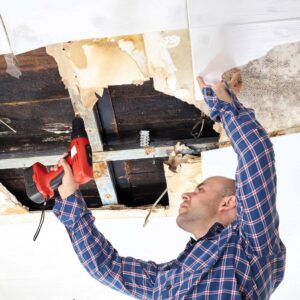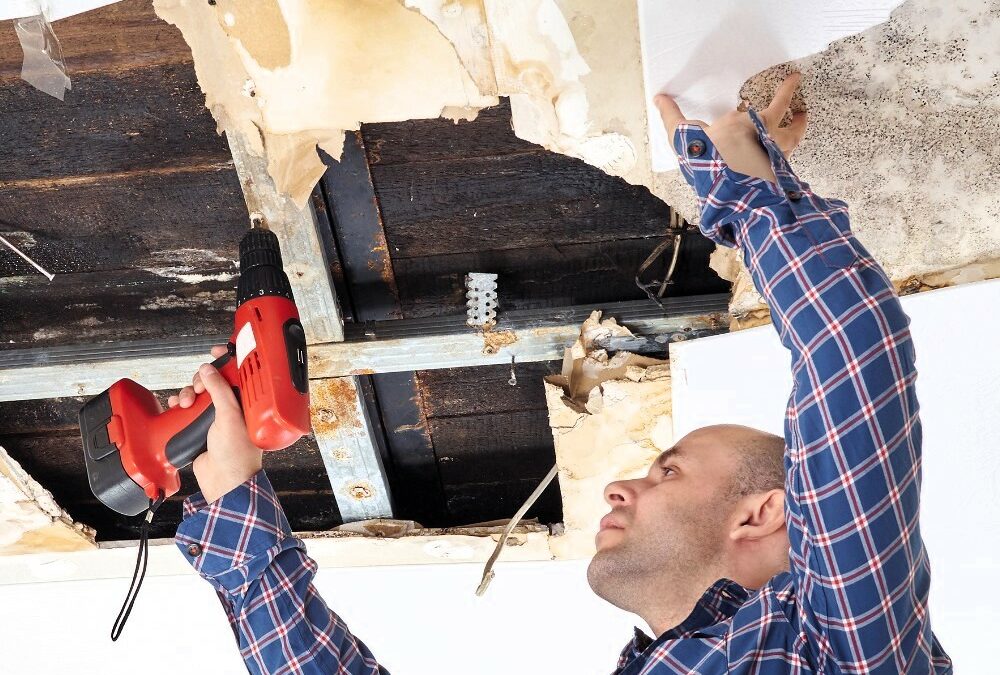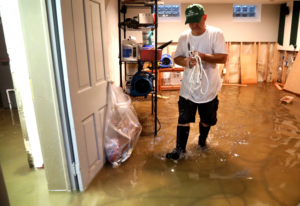Water damage can be a homeowner’s worst nightmare. From leaks to floods, water can wreak havoc on your property, leading to costly repairs if not addressed in time. With various causes, from natural disasters to faulty plumbing, the aftermath can result in structural issues and mold growth. Addressing these issues promptly can prevent further damage and maintain the safety and value of your property.
Water damage restoration is crucial to prevent mold growth and structural issues, with expert tips ranging from identifying the type of water damage to the importance of fast drying and seeking professional assistance for serious damage.

Types of Water Damage
Different types of water damage present unique challenges. Clean water, which comes from rain or leaking pipes, poses no immediate health risks. Gray water, from appliances or showers, contains contaminants and may cause illness. Lastly, black water, typically from sewage or severe flooding, can be hazardous and requires professional intervention. Addressing the type of water damage efficiently is vital for effective restoration.
Recognizing and Addressing Serious Issues Like Mold
Mold can start growing within 48 hours of water exposure. It not only damages property but poses health risks, especially for those with respiratory issues. While minor mold can be cleaned using specialized products, extensive mold growth necessitates professional intervention.
In the face of water damage:
- Safety First: Disconnect Electricity
Before anything else, switch off the electrical supply to the affected area to prevent electric shocks or fires. Always prioritize safety.
- Identify Water Source
Quickly find out where the water is coming from. Knowing the source can help you better assess how to handle the situation.
- Shut Off Water Source
Whether it’s a leaky pipe or a faulty appliance, stop the water flow as soon as possible to minimize damage.
- Assess Water Type
Identify whether you’re dealing with clean, gray, or black water, as this will guide your cleanup process and safety precautions.
- Wear Protective Gear
Equip yourself with gloves, masks, and waterproof boots to protect against contaminants, especially if you suspect the water may not be clean.
- Initiate Water Removal
Use buckets, towels, mops, or a wet-dry vacuum to remove as much standing water as possible. The faster you do this, the less damage will occur.
- Start Drying Process
Set up fans and dehumidifiers to start drying out affected areas. If it’s not raining, open windows to help with the drying process.
- Remove Porous Materials
Discard materials like carpets, fabric, and insulation that cannot be completely dried. These materials can harbor mold and bacteria.
- Take Inventory
Document the damage, including taking photos or videos, for insurance purposes and to help with any necessary repairs or replacements.
- Disinfect the Area
Use a strong disinfectant to clean walls, floors, and any other surfaces that have been in contact with water. This prevents bacterial and mold growth.
- Assess Damage to Furniture
Check the condition of furniture and other items. Decide what can be saved or restored and what needs to be discarded.
- Inspect the Ventilation
Check your HVAC system, if affected. Water damage in these systems can circulate mold and bacteria throughout your home.
- Contact Professionals
For significant water damage, it’s often best to consult professionals. They can assist with assessments, repairs, and ensuring that the area is completely dry to prevent future damage.
Focus on Ceilings and Structural Components
Water-damaged ceilings can collapse, posing significant risks. Look out for dark spots or sagging, which indicate damage. Structural wood weakened by water can compromise your home’s integrity. In such cases, replacement or reinforcement is necessary.
Flooring Concerns and Solutions
Damaged floors can warp, crack, or become breeding grounds for mold. If signs of damage are present, consider replacements or upgrades to waterproof options, which offer greater resilience against future incidents.
Drywall and External Siding Management
Wet drywall can lose its structural integrity. Depending on the damage extent, sections might need replacement. Similarly, external siding can warp or rot, necessitating repairs to safeguard your home’s external barrier.
Finishing Touches After Restoration
After addressing the primary damages, it’s time for finishing touches. Ensure areas are sealed with caulking, and consider repainting to refresh and protect surfaces. Lastly, review insurance policies to understand coverage related to water damages.
Conclusion
Timely action in the face of water damage is imperative. Equipping oneself with the necessary knowledge ensures efficient restoration. Yet, recognizing when to seek professional help can save time, money, and further complications.
FAQ Section
Q: Oops, I’ve got water damage. What’s the first thing I should do?
A: First and foremost, figure out where that water’s coming from and put a stop to it. Then, give your insurance folks a call. Remember, safety first – for both people and your stuff. After that, start repairing the damage and dry your place out thoroughly. And keep an eye out for mold – that can sneak up on you!
Q: Will water damage just… you know, sort itself out?
A: Well, you might think it’s all good once the water dries up, but there could be issues lurking underneath. If you leave water damage unchecked, you’re basically rolling out the red carpet for mold and potential structural issues. And I’ve noticed this especially in 2023!
Q: I want to dry out the water damage ASAP. Any tips?
A: Absolutely! Airflow is your best friend here. Think fans – pedestal ones, circulators, blowers, or even the ones you put in the window. Oh, and a pro-tip from 2022: Open up your cabinets and closets and even take out furniture drawers. It’ll help things dry faster.
Q: How long should I keep those fans running after water damage?
A: Great question! Keep those fans going until everything feels dry. It really depends on how bad the damage is and the humidity in your area, but 24-48 hours is a solid ballpark.
Q: Can just one water leak cause mold?
A: Yep, believe it or not, even a single leak can invite mold if you don’t dry things out quickly. Always best to be on the lookout for any moldy suspects!


